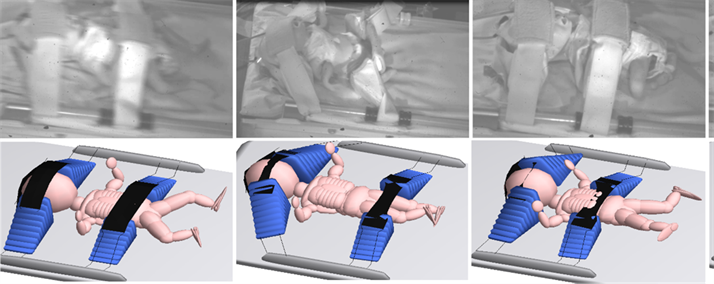Improving inter-hospital transport for sick newborn infants

Although neonatal intensive care has advanced hugely in recent years with many more premature babies surviving, very preterm babies are still at risk of developing disabilities or neurological conditions. Many premature babies need to be taken some distance for specialist treatment within a few hours of birth. In the UK there are currently more than 16,000 neonatal inter-hospital transfers which is on the increase.
In a few years, premature babies could benefit from new safer systems for transporting them between hospitals thanks to pioneering research underway in Nottingham.
Risks of neonatal transport
Clinicians, scientists and engineers at The University of Nottingham have studied the effects of noise, vibration and stress on premature babies in order to develop a safer, better transport incubator for use during transfers between hospitals for specialist care.
Research led by Associate Professor of Neonatal Medicine Dr Don Sharkey, provides the most detailed assessment of vibration exposure in newborn babies to date. Very premature babies who need to be transported between hospitals for life saving care are more likely to develop brain injury. This can lead to life-long disabilities and neurological conditions such as cerebral palsy. This type of brain injury is most likely to happen in the first few days of life when many of these babies are transferred. The team speculate that the significant vibration and noise the babies are exposed to could be a major contributing factor in the stress and brain injury observed.
Designing a new transport incubator
Working with Professor Donal McNally, and others at the Centre for Healthcare Technologies, the team have also crash tested current newborn restraint systems used during the transport and believe they can be significantly improved.
The team are now undertaking a 3 year project to develop the next generation of neonatal transport system that aims to reduce the vibration and noise, whilst improving the comfort and safety, to reduce the stress for the baby and hopefully improve neurological outcomes.
The research is large collaborative effort with Industrial partners including ParAid Medical. The team has been awarded £872,000 by the NIHR to support this project, in addition to over £300,000 already awarded, and hope to have the new system available in 3-4 years that will improve the care of babies for years to come.
Neonatal head and torso vibration exposure during inter-hospital transfer